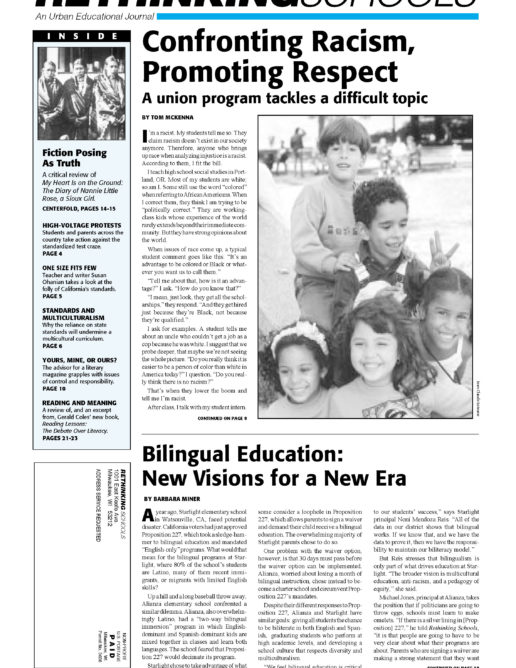Preview of Article:
The Columbine Tragedy
We also need to reflect on the tragedy’s school context and this country’s overall high-school culture of bullying and intolerance. One member of the so-called trench coat mafia told the Denver Post that “he was taunted and terrorized by his schoolmates — so-called jocks who called him ‘faggot,’ bashed him into lockers, and threw rocks at him from their cars while he rode his bike home from school.”
“I can’t describe how hard it was to get up in the morning and face that,” the boy said. “Hell,” he added. “Pure hell.”
Every school in the country needs to perform a safety inventory, asking: Do we tolerate racist, sexist, or homophobic put-downs? Are students allowed to be different without being taunted or bullied? Who is marginalized by the school culture, and how? Are students able to speak openly about the issues that concern them most deeply? Are adults at the school given the resources and time it takes to personally connect with each student?
High schools are overly large and impersonal, they track and sort students, and they treat education as a mere transfer of information. Competition, not caring, rules the day. As Timothy Egan wrote recently in the New York Times, “Schools today are so focused on test scores, and not emotional train wrecks, that they are missing the real problems in their midst. …”
Clearly, we must transform the nature of teaching and learning in our schools, so that schools can nurture a culture of conversation, empathy, and appreciation of difference. Students are complex human beings, struggling to make sense of the world and their place in it. We must never forget that.</p

